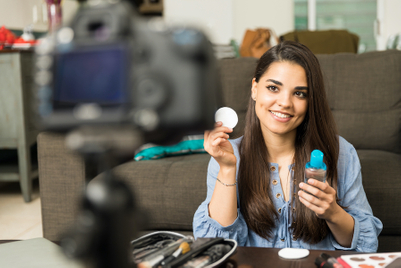
Over the last decade, influencer marketing has evolved from a nascent, often misunderstood, concept into a cornerstone of modern brand strategy. Once dismissed as a fleeting and even fickle trend, it has now become essential for brands across all industries.
Whether it is a single lipstick brand or an automotive company, no brand can afford to ignore the power of influencer collaborations today. According to estimates, the global influencer ecosystem includes approximately 64 million Instagram influencers, 5 million YouTube influencers, and over 100,000 TikTok influencers. This exponential growth underscores the undeniable impact of influencers on consumer behaviour and brand perception.
However, the influencer marketing landscape is evolving with the rise of micro-influencers. These influencers, typically with follower counts ranging from 10,000 to 100,000, exert significant influence within specialised communities. Despite their smaller audiences compared to celebrity influencers, micro-influencers are making a notable impact.
This raises important questions. Why is this happening, and can micro-influencers truly compete with the established stars who dominate social media feeds with brand partnerships?
The power of niche authenticity
We often think of influencers as a modern phenomenon, but their roots can actually be traced back to as far as ancient Rome, where gladiators endorsed products. Fast forward to the 18th century, an English potter, Josiah Wedgwood, created a tea set for the wife of King George III in the 18th century, leveraging her status to promote his brand.
These are just a few examples. But this fascinating history tells us that the origins of influence have always been steeped in it being a niche commodity. When influence becomes too widespread, it loses its value—exactly why micro-influencers are gaining popularity today.
Consumers today are yearning for genuine connections and are increasingly sceptical of inauthentic marketing tactics. They crave connections with influencers whose experiences and lifestyles mirror their own. Micro-influencers, with their focus on specific niches, often cultivate a more personal and down-to-earth presence.
Consider the #MyTravelGear campaign by Patagonia. The outdoor apparel brand partnered with a network of micro-influencers who were passionate hikers, climbers, and adventurers. These micro-influencers showcased Patagonia products while sharing their authentic experiences on the trail, resonating far more deeply with their niche audience than a generic celebrity endorsement ever could.
Reliability over reach
Micro-influencers excel at fostering a sense of community. Their smaller follower bases allow for more direct interaction with their audience, building trust and loyalty. A beauty influencer with 10,000 followers might be able to respond to every comment and direct message, creating a sense of intimacy that a mega-influencer with millions simply cannot replicate.
The 2023 campaign by Dove partnering with micro-influencers who championed body positivity is a prime example. These relatable influencers, known for their diverse body types and backgrounds, were able to connect with a wider audience on a more personal level, sparking meaningful conversations about self-acceptance.
In fact, a Socialbakers study conducted in 2023 revealed that micro-influencers experience a 60% higher engagement rate compared to mega-influencers, highlighting the stronger bond these smaller creators establish with their audience. This connection makes them more reliable and effective influencers, as they are more likely to produce content that resonates with their followers.
Higher engagement rates
Studies have consistently shown that micro-influencers typically generate higher engagement rates compared to their mega-influencer counterparts. Their audience is more likely to comment, like, share, and click on their posts, leading to a more direct and impactful brand association.
For example, Airbnb employs marketing strategies that leverage micro-influencers to share their distinctive travel experiences, highlighting the diverse range of accommodations available on the platform. By featuring personal stories and hidden gems found through their service, the homestay marketplace effectively encourages their target audience to explore unique travel destinations, thereby seamlessly promoting their app.
Furthermore, micro-influencers often specialise in specific niches, allowing brands to target highly relevant audiences. For instance, a beauty brand promoting a new organic skincare line can partner with a micro-influencer known for their focus on sustainable beauty products, reaching a pre-qualified audience with a strong interest in the category.
Additionally, the intimate connection between micro-influencers and their audience facilitates a simpler evaluation of campaign efficacy. Brands can monitor vital metrics such as engagement rates, click-through rates, and conversion rates, garnering invaluable insights into the success of their influencer marketing approach.
Lastly, compared to mega-influencers who command hefty fees, micro-influencers offer a more cost-effective solution for brands. This allows brands to stretch their marketing budgets further and potentially collaborate with multiple micro-influencers to reach a wider audience segment.
The rise of micro-influencers signifies a significant shift in the influencer marketing landscape. Brands are increasingly recognising the value of authenticity, engagement, and targeted reach that micro-influencers offer.
As the industry continues to evolve, we can expect micro-influencers to play an even more prominent role in shaping brand marketing strategies. For brands seeking to connect with their target audience in a genuine and impactful way, partnering with micro-influencers offers a powerful and cost-effective solution.
Akshaara Lalwani, founder and CEO of Communicate India.



.jpg&h=334&w=500&q=100&v=20250320&c=1)
.jpg&h=334&w=500&q=100&v=20250320&c=1)
.jpg&h=334&w=500&q=100&v=20250320&c=1)


.jpg&h=334&w=500&q=100&v=20250320&c=1)








.jpg&h=268&w=401&q=100&v=20250320&c=1)



